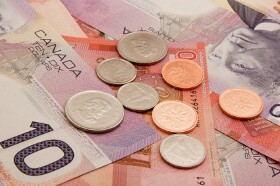The Canadian dollar had a pretty bad week as talks about the European debt crisis plagued the Forex market, driving traders away from riskier commodity currencies.
Fears that Greece would exit the eurozone and that the crisis is spreading to Spain hammered the loonie, as the Canadian currency is usually nicknamed. Domestic fundamentals were actually good for the currency. Manufacturing sales climbed 1.9 percent in March and consumer price inflation was 0.4 percent in April. Economists believe that Canada would the first country from the Group of Eight to raise its interest rates. The loonie is likely to strengthen then, but for now the currency remains depressed.
The Canadian dollar posted losses against the greenback each day of this week. The currency was flat one day against the yen, but otherwise the trend was the same straight way down. The loonie fell even the euro and the Australian dollar, which were also weakened by risk aversion, though its moves were less straightforward versus these currencies.
USD/CAD surged from 1.0001 to 1.0221 this week, posting the highest weekly close since January. CAD/JPY sank from 79.93 to 77.25, also the lowest since January. EUR/CAD advanced from 1.2901 to 1.3060, following the drop to 1.2781 — the lowest level since January 2011. AUD/CAD climbed from 1.0012 to 1.0059 during the week.
If you have any questions, comments or opinions regarding the Canadian Dollar,
feel free to post them using the commentary form below.
